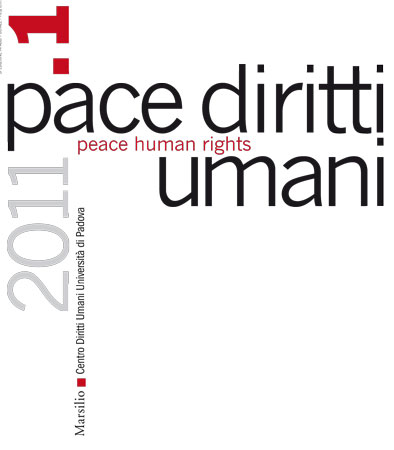Raccolte

L'intensa primavera nucleare di Barack Obama
- Contenuto in
- Pace diritti umani - Peace Human Rights, 1/2011
- Tipologia pubblicazione
- Articolo / Saggio
- Pagine
- 53
- Lingua
- IT
President Obama's Intense Nuclear Spring
Alessandro Pascolini
The new American President in the first months of this year has given high priority to the problems of nuclear weapons, practically addressing all challenges posed by disarmament, non-proliferation and security.
The actions and initiatives taken actualise the ideas presented by Barack Obama in his Prague speech on 5 April 2009 in the perspective of «a world without nuclear weapons». The main three goals of these actions are: 1) reductions of the nuclear arsenals and devaluation of the role of nuclear weapons in the security posture; 2) strengthening the nuclear non-proliferation regime; 3) securing all nuclear material and facilities, and increasing the prevention of nuclear terrorism.
The three objectives are strictly intertwined and progress in the achieve ment of one goal strongly affects all others. Simplifying, we can characterise this spring acts according to their main goal.
To the first group (disarmament) we can ascribe: the Treaty between the United States of America and the Russian Federation on Measures for Further Reduction and Limitation of Strategic Offensive Arms (New START), the Nuclear Posture Review, the Stockpile Stewardship and Management Plan and the release of detailed information on the evolution of US nuclear arsenal.
Relevant to non-proliferation are the 2010 Review Conference of the Non-Proliferation Treaty (NPT); the proposal to ratify the additional protocols of the Pelindaba and Rarotonga treaties for the establishment of the African and South Pacific Nuclear Weapons Free Zones (NWFZ), respectively; the commitment to discuss with the countries of South-East Asia and of Central Asia for the solution of the problems presently preventing the US participation to the Bangkok and Semipalatinsk treaties, which created these NWFZs; the presentation to the Congress implementing legislation of the Amended Convention on the Physical Protection of Nuclear Material; and the ratification of the US-Russian Agreement for Peaceful Nuclear Cooperation.
Pertinent to both disarmament and non-proliferation are the commitment to ratify the Comprehensive Test Ban Treaty (CTBT) and to negotiate the Fissile Material Cut-off Treaty (FMCT), treaties which prevent the development of new kinds of nuclear weapons and made disarmament irreversible.
Finally, the Nuclear Security Summit, promoted and hosted by Obama, afforded the problems related to the security of nuclear material and facilities, in order to prevent nuclear terrorism and reduce the risks of un-authorised possession and use of fissile material.
The paper considers in detail each of these events and activities, underlying their strategic and political aspects, and the perspectives of their actual success. In order to better understand the New START treaty, the previous USA-Russia nuclear arms control agreements are also synthetically reviewed. The last section globally considers Obama's nuclear agenda, in the context also of his National Security Strategy (released last spring, too), and verifies its coherence with his vision, one year after Prague.

